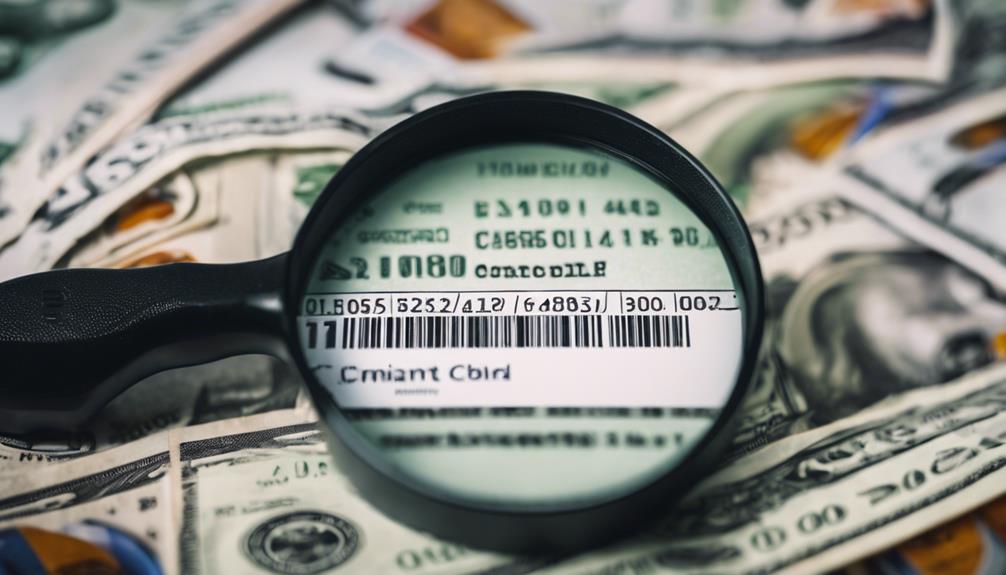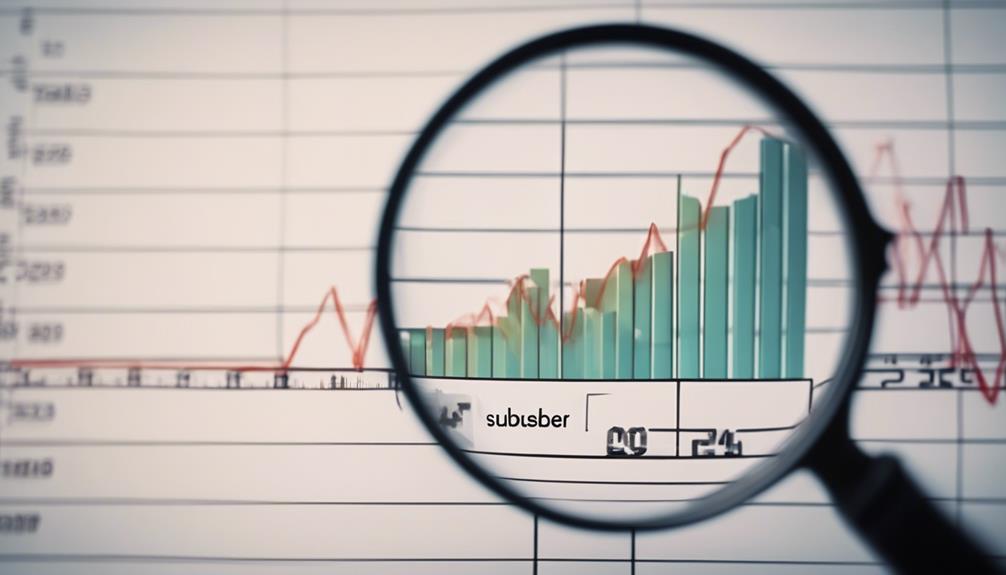
How can you tell if someone bought views?
Baffling bot behavior boosts views, but can you tell when someone’s bulk buying their audience?
You might be curious about the validity of a video’s popularity, especially when its view count skyrockets overnight. Spotting artificially inflated view counts can be tricky, but there are a few telltale signs that can tip you off.
Let’s uncover the secret behind these suspicious spikes in views and scrutinize the signs of purchased popularity.
But remember, as with all things deceptive, the devil is in the detail.
Key Takeaways
- High views-to-likes ratio and irregularities in view counts can suggest purchased views.
- Disproportionate like-to-view ratios and inconsistencies in views and shares signal artificial view inflation.
- Inauthentic comments and repetitive statements can indicate bot-generated engagement.
- Sudden spikes in subscriber numbers and irregularities in subscriber demographics may reveal bought views.
Understanding the Concept of Bought Views

Often, you’ll come across YouTube videos with unusually high view counts, which may, in fact, be a result of bought views – a common, yet controversial, strategy employed to boost online visibility. Essentially, these view manipulation tactics involve purchasing artificial views from various platforms that offer such services.
Now, you might be thinking, ‘What’s the big deal?’ Well, it’s not as innocent as it seems. This strategy not only skews the perceived popularity of a video but also impacts the algorithm. YouTube’s algorithm, much like Google’s, is designed to promote high-quality, relevant content. It considers various factors, including view count, to determine video rankings.
When view counts are manipulated, it tricks the algorithm into thinking the video is more popular and relevant than it actually is. This leads to the video showing up in more recommendations, search results, and trending lists, giving it a higher visibility than deserved.
Analyzing the Views-to-Likes Ratio
You need to grasp the Views-to-Likes ratio to better detect purchased views. Any major discrepancies in this ratio can raise a red flag, pointing towards potential view manipulation.
Use this strategic approach to pinpoint inconsistencies quickly and maintain the integrity of your analytics.
Understanding the Ratio
A critical part of detecting purchased views is analyzing the views-to-likes ratio, as it can provide insightful data that might not be immediately apparent. This ratio should ideally align with viewer demographics and engagement authenticity. Consider the table below:
| Views-to-Likes Ratio | Likely Scenario |
|---|---|
| High ratio | Possibly bought views |
| Low ratio | Genuine engagement |
A high ratio might indicate an inflated view count with little interaction, hinting at bought views. Conversely, a lower ratio suggests more likes per view, pointing to authentic engagement. But don’t rush to conclusions. You’ll need to assess this ratio in tandem with other metrics to gain a comprehensive understanding. Remember, strategic and innovative analysis is key in uncovering the truth.
Spotting Inconsistencies Quickly
Spotting inconsistencies in the views-to-likes ratio can swiftly expose a likely presence of purchased views. You’ll need your analytical cap on, with a tech-savvy approach to detecting fake profiles. Look for unnatural engagement patterns that disrupt the usual flow. If the number of views significantly outweighs likes, that’s a red flag. Real users tend to interact, not just watch.
It’s crucial to delve deeper, too. A sudden spike in views without a corresponding increase in likes or comments is suspicious. The timing of interactions may also reveal fakes – genuine profiles won’t all engage at once. It’s a strategic game of data analysis, but with a keen eye, you can uncover the truth behind the numbers. Use these strategies to maintain the integrity of your digital space.
Spotting Inconsistencies in View Counts

Examining data for irregularities in view counts often serves as the first step in detecting artificially inflated numbers. Spotting these view count anomalies and deciphering unnatural engagement patterns requires a keen eye and strategic approach.
It’s crucial to remember that genuine views build up gradually, reflecting the organic spread of content. However, when views are purchased, there’s often an unnatural spike in numbers that doesn’t correlate with the timeline of content release.
Here are three key inconsistencies you should look out for:
- Sudden view count spikes: A sudden increase in views, particularly soon after content release, is a red flag. Genuine audience growth tends to be more gradual.
- Disproportionate like-to-view ratios: If a video has an excessive number of views compared to likes, it’s likely the views have been bought.
- Inconsistencies between views and shares: When the number of shares is significantly lower than the number of views, it might indicate artificial inflation.
Understanding these anomalies will help you spot fraudulent activity and maintain the integrity of your platform. Stay vigilant and keep innovating to stay ahead of those who attempt to manipulate the system.
Assessing the Quality of Comments
Evaluating the quality of comments is a critical step in recognizing purchased views.
You’ll want to analyze the authenticity of comments, spotting generic and repetitive statements that often suggest artificial engagement.
Analyzing Comment Authenticity
To assess the authenticity of comments, you’ll need to dive into the intricate task of comment quality analysis, a potent tool in your arsenal to detect purchased views. This process involves scrutinizing the comments for telltale signs of inauthenticity, such as Comment Bots Identification and Reviewing Comment Timestamps.
- Comment Bots Identification: Bots often leave generic comments that lack context or fail to engage meaningfully with the content. They also tend to post at a frequency that’s humanly impossible, a dead giveaway.
- Reviewing Comment Timestamps: If a large number of comments appear simultaneously or within a short span, it’s likely that they’ve been purchased.
- Looking for patterns: Bots often repeat the same phrases or use similar language across multiple comments.
Spotting Generic Responses
Spotting generic responses in the comment section can often serve as your first line of defense in unmasking purchased views. When you see vague, repetitive comments, it’s possible these are artificial engagement indicators. They’re churned out by bots, not genuine viewers.
Fake profile detection can be a game-changer here. Look for profiles with few followers or posts, as they’re often behind these generic comments. Also, be wary of profiles with unfamiliar languages or nonsensical usernames.
Identifying Repeated Statements
Delving deeper into the quality of comments, you’ll often find that repeated statements are a telltale sign of purchased views, playing a pivotal role in your strategic analysis. Analyze these comments with a critical, tech-savvy eye. Look for repetition, irrelevance, and generic responses. This is where your fake accounts identification skills come into play.
- Pattern recognition: Spotting similar comments, especially on different videos, can indicate automation.
- Video duration analysis: Check if comments were made immediately after upload, without enough time for actual viewing.
- User activity: Fake accounts often have little to no other activity, raising suspicion.
Stay innovative, strategic, and diligent in your assessment. Remember, it’s not just about numbers, but also about the quality of engagement.
Investigating the Source of Traffic
Often, you’ll find it crucial to meticulously analyze the source of your traffic to effectively detect purchased views. This process, known as traffic origin research, involves a strategic deep dive into the demographics of your viewers. You’re not just looking for numbers; you’re also hunting for patterns, trends, and anomalies.
Unusual activity detection is a key aspect of this investigation. For instance, if most of your genuine traffic originates from the US, but suddenly there’s a spike from a country with a different native language, that’s a red flag. Also, be wary of sudden influxes of traffic from regions known for bot activity.
Moreover, analyzing viewer engagement can provide valuable insights. Genuine viewers are likely to interact with your content; they leave comments, like, share, and engage. On the other hand, bot-generated views typically lack these interactions.
Investigating traffic sources isn’t just a tech-savvy move; it’s a strategic one. It allows you to protect your brand’s authenticity, maintain viewer trust, and uphold your platform’s integrity. Remember, in this innovative digital age, transparency trumps trickery every time. Stay vigilant and always keep an eye on your traffic.
Checking the Channel’s Subscriber Growth

Along with scrutinizing your traffic sources, it’s equally important to keep a close eye on your channel’s subscriber growth, as abrupt increases could be a sign of purchased views. You’ve got to be strategic and tech-savvy when analyzing your channel’s subscriber demographics and engagement.
- Examine the subscriber demographics closely. Look for any irregularities. For instance, if your channel typically attracts a certain age group or geographical region, a sudden influx of subscribers outside of this demographic could suggest that these new subscribers aren’t genuine.
- Assess the subscriber engagement. Genuine subscribers will likely interact with your content – they’ll like, comment, and share your videos. If you notice a significant growth in subscribers but your engagement rates remain the same or decrease, it might indicate that these subscribers aren’t real.
- Look for sudden spikes in subscriber numbers. Gradual, consistent growth is usually a good sign, while sudden, unexplained spikes can be a red flag.
Identifying Irregular View Patterns
Spotting irregular view patterns is a crucial step in determining whether your views might be artificially inflated. A sudden spike in views, without a corresponding increase in engagement, can indicate that views have been bought. Using video analytics, you can observe these inconsistencies over time.
Consider, for instance, the following table:
| Time Period | Views | Engagement |
|---|---|---|
| Month 1 | 500 | 50 |
| Month 2 | 5000 | 60 |
| Month 3 | 600 | 55 |
The sudden increase in views during Month 2, with only a minor uptick in engagement, suggests the possibility of bought views.
Remember, it’s not just about the numbers. The overall viewer behavior is important too. Look for engagement fluctuation. Are there sudden surges in likes, shares, or comments that don’t align with the viewing pattern? That’s a red flag.
Being strategic and tech-savvy means understanding your video analytics and making informed decisions. Don’t be fooled by artificial engagement. It’s your innovative spirit that will drive genuine views and engagement. So, keep your eyes on the data and trust your instincts.

